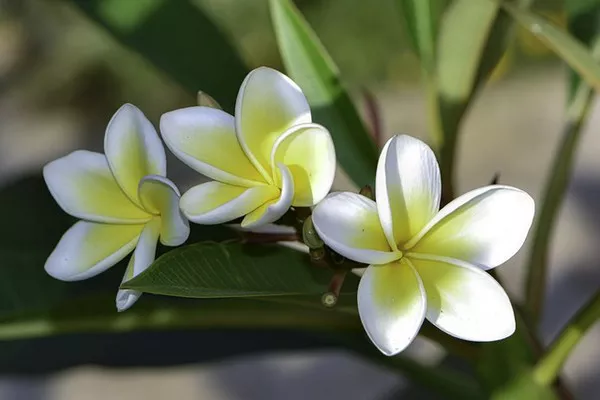Jasmine, with its fragrant and delicate flowers, is a popular choice for outdoor gardens and landscapes. Its charming blossoms can add beauty and fragrance to any outdoor space. However, if you find that your outdoor jasmine plant is not producing the expected blooms, it can be a cause for concern and frustration. There are several reasons why your outdoor jasmine may not be flowering as expected, and understanding these factors is essential to remedy the situation and encourage your jasmine to flourish. In this article, we will explore the common causes and solutions for non-flowering outdoor jasmine.
Insufficient Sunlight
One of the primary reasons why your outdoor jasmine may not be flowering is insufficient sunlight. Jasmine plants thrive in full sun to partial shade, with at least 4-6 hours of direct sunlight daily. If your jasmine is planted in a location where it does not receive enough sunlight, it may focus its energy on vegetative growth rather than flowering.
Solution: Consider relocating your jasmine plant to a sunnier spot in your garden or trim back nearby trees or shrubs that may be blocking sunlight. Providing adequate sunlight is crucial to encourage flowering in jasmine.
Pruning at the Wrong Time
Jasmine plants often produce flowers on old growth. If you prune your outdoor jasmine at the wrong time of year, you may inadvertently remove the growth that would have produced flowers. Jasmine typically blooms in spring or early summer, depending on the variety. Pruning in late winter or early spring before the growing season can remove potential flower buds.
Solution: To avoid this issue, prune your jasmine plant immediately after it finishes flowering. This way, you can remove dead or unruly growth while preserving the branches that will produce flowers in the next blooming season.
Over-Fertilization
While fertilizer is essential for plant growth, excessive fertilization can lead to lush foliage at the expense of flowers. High nitrogen fertilizers, in particular, can promote vigorous vegetative growth but inhibit flower production.
Solution: Use a balanced, slow-release fertilizer specifically formulated for flowering plants. Apply it according to the manufacturer’s instructions and avoid over-fertilizing. A balanced fertilizer with equal proportions of nitrogen (N), phosphorus (P), and potassium (K) is generally suitable for jasmine.
Improper Pruning Technique
Pruning is essential for maintaining the health and shape of your outdoor jasmine, but it’s crucial to use the correct pruning technique. If you prune too aggressively or improperly, you may remove potential flower buds or stress the plant.
Solution: When pruning, focus on removing dead or damaged growth, as well as any tangled or overcrowded branches. Avoid cutting back healthy, vigorous branches excessively. Pruning should encourage new growth while preserving the older branches that are likely to flower.
Inadequate Watering
Both overwatering and underwatering can negatively impact jasmine flowering. Inconsistent moisture levels can stress the plant and inhibit its ability to produce flowers.
Solution: Maintain a consistent watering schedule for your outdoor jasmine. Water deeply when the top inch of soil feels dry, but ensure that the soil does not become waterlogged. Proper watering is essential to keep the plant healthy and promote flowering.
Pests and Diseases
Pests and diseases can weaken your outdoor jasmine plant, making it less likely to produce flowers. Common pests that can affect jasmine include aphids, whiteflies, and spider mites. Diseases such as root rot and powdery mildew can also hinder flowering.
Solution: Regularly inspect your jasmine plant for signs of pests or diseases. If you notice any issues, treat them promptly with appropriate insecticides or fungicides. Additionally, maintaining good garden hygiene and proper watering practices can help prevent these problems.
Age of the Plant
The age of your jasmine plant can play a role in its flowering behavior. Younger plants may take some time to establish themselves before they begin producing abundant flowers. Additionally, some jasmine varieties are known to be slower bloomers than others.
Solution: Be patient with young jasmine plants and give them time to establish their root systems. As they mature, they are more likely to produce flowers. If you suspect your jasmine variety is a slower bloomer, research its typical flowering habits and adjust your expectations accordingly.
Environmental Stress
Environmental stress factors, such as extreme temperatures, strong winds, or drought conditions, can inhibit flowering in jasmine. These stressors divert the plant’s energy away from blooming toward survival and growth.
Solution: Protect your jasmine from extreme environmental conditions as much as possible. Consider providing windbreaks, mulching to retain moisture, and shading during excessively hot periods. Creating a stable and comfortable environment for your plant can encourage flowering.
Wrong Jasmine Variety
It’s essential to choose a jasmine variety that is suitable for your climate and growing conditions. Some jasmine varieties may not thrive or flower well in certain regions or environments.
Solution: Research and select jasmine varieties that are well-suited to your specific climate and location. Native or adapted varieties are more likely to flourish and produce abundant flowers in your area.
Seasonal Variations
Finally, keep in mind that jasmine is a seasonal bloomer. Depending on the variety, it may only produce flowers during specific times of the year. If your jasmine is not currently in its blooming season, it may not flower until the appropriate time.
Solution: Research the flowering season of your specific jasmine variety and be patient if it is not currently in bloom. Jasmine is known for its prolific flowering during the right season, so you can look forward to a beautiful display when the time is right.
Conclusion
If your outdoor jasmine is not flowering as expected, it’s important to investigate and address the underlying causes. By ensuring that your jasmine receives adequate sunlight, proper pruning, appropriate fertilization, and consistent care, you can encourage it to bloom and fill your garden with its delightful fragrance and beautiful flowers. Remember that patience and proper maintenance are key to the successful cultivation of this beloved ornamental plant.


